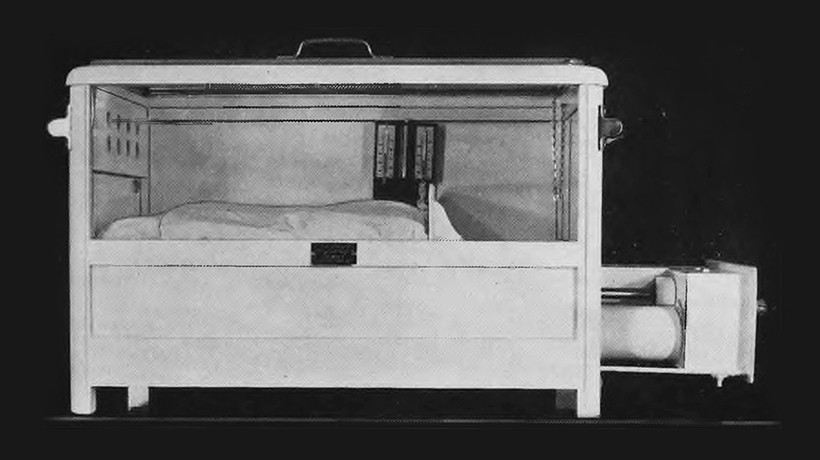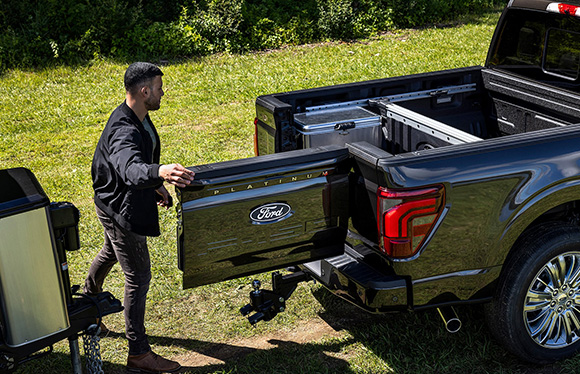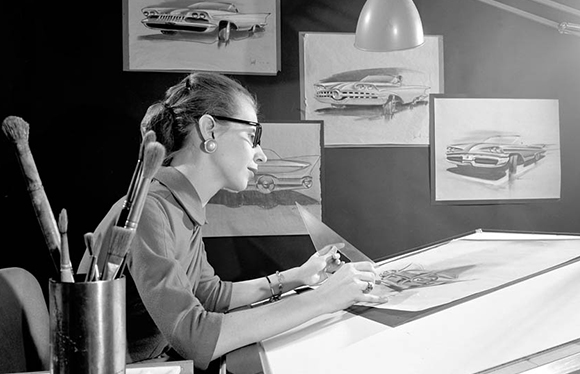
A Heritage of Help
Throughout its 120-year history Ford has stepped up and made contributions in times of need. From bombers to incubators, vehicles are not the only items to come out of Ford plants.
Recently, Ford is answering the call for action by joining forces with others to quickly expand the production of urgently needed medical equipment for patients fighting coronavirus. It was announced that Ford and GE Healthcare will be leveraging a design of Airon Corp’s FDA-cleared ventilators with a goal to produce 50,000 of the much-needed units within 100 days and up to 30,000 a month thereafter as needed. Ford’s Rawsonville plant will produce the ventilators nearly around the clock, with 500 paid volunteer UAW-represented employees working on three shifts.


Ford is a company with a strong history of making contributions in times of need. The first vehicle out of the Rouge plant in 1918 was not a Model T, rather it was a submarine chaser known as an Eagle boat. Ford was producing these boats for the efforts of the Navy during World War I and at the time Ford set a record of a boat in ten days. In his writings Henry Ford stated, “They were built simply by applying our production principles to a new product.” This idea of using production principles that are already in place and adapting them for a new product to help in a time of need is something that Ford Motor Company has been doing since the beginning.
The story of the “Arsenal of Democracy” and Ford Motor Company’s contributions to the war effort during World War II is one that is well known. Tanks, jeeps, and planes were rolling off Ford assembly lines. Ford’s Willow Run plant was built to mass produce the B-24 Liberator bomber, it was the first time the assembly line process was used to produce airplanes. By 1944 the plant was producing almost a plane an hour on the mile-long production line. On the civilian front, Ford was providing resources for successful Victory Gardens as an answer to widespread food rationing.
Wartime production was not the only way in which Ford was contributing. In 1941, the Ford News reported that one of the greatest causes if infant mortality was premature birth, and that “death caused by it strikes most often in rural areas where the only substitute for the warmth of the mother’s body, the incubator, was seldom available.” That same year Henry Ford was at lunch with a group of doctors at the Henry Ford Hospital, when he overheard a conversation about the development of a portable incubator. This development of a smaller portable machine was meant to help hospitals located in rural areas where traditional incubators could not be afforded. He was so impressed that he offered them the services of design and thermal engineers in the laboratories at the Rouge Plant.
But building an inexpensive portable incubator could not be accomplished by simply reducing the size of the larger models. A method was soon devised to use an electric light bulb to heat the incubator, however humidifying the cabinet was another problem. Using an electric circuit meant that when oxygen was pumped into the incubator there was potential for it to ignite from an electrical spark. Rouge Plant engineer William B. Pioch and draftsman Stanley Woolams produced a new design allowing for a method that would insulate the electric light used to heat the interior of the incubator box so that oxygen may be added with perfect safety. The collaboration of the doctors and engineers culminated in the production of a completely successful, low-cost incubator in one of the Rouge Plant shops.
The value of this development for small rural communities is summed up by the comments of Dr. B.H. Growt, who had built a community hospital in Addison, Michigan that was badly in need of an incubator. He had heard of the Ford development stating that “the nearest incubator is twenty-five miles away and you can’t take a premature infant by automobile that distance We’ve done our best in every case, but it is usually a losing fight. We have the answer in this Ford incubator.”
By the late 1940s the Polio crisis was rising in the U.S. and the Rouge news reported that Ford was involved in helping with the development of medical aids for hospital use. At the Rouge, the Plastics plant, Production Engineering, and Tool & Die departments combined talents to produce an iron lung for polio victims between the ages of seven and twelve years in just ten days. While the Special Machine Design section of Production and Processing Engineering, was working to develop a new electronically operated cradle that would rock the chamber containing the patient back and forth about five degrees to help maintain normal blood circulation in the polio victim.
These improvements to the iron lung machine were small but impactful. Ford engineers were also able to develop an “inspection window.” A full-length plexiglass window placed in the upper part of the “lung” would allow nurses and doctors to view the patient without removing them from the machine. These new features allowed for the ability to properly treat patients and provide the best care possible.
By joining forces with firms such as 3M and GE Healthcare to quickly expand production of urgently needed medical equipment and supplies for healthcare workers, first responders, and patients fighting coronavirus, Ford is once again answering the call to help. From leveraging its in-house 3D printing capability to produce components for use in personal protective equipment (PPE) to beginning the production of urgently needed ventilators. Ford expects to produce 1,500 by the end of April, 12,000 by the end of May and 50,000 by July 4 – helping the U.S. government meet its goal of producing 100,000 ventilators in 100 days. Ford Motor Company has a strong heritage of help and is continuing that legacy by stepping up in these uncertain times.


